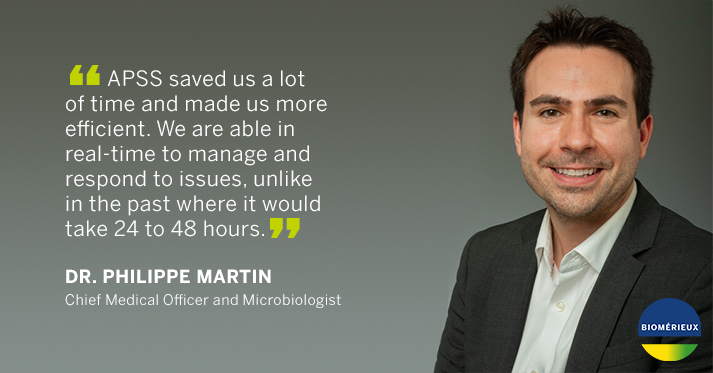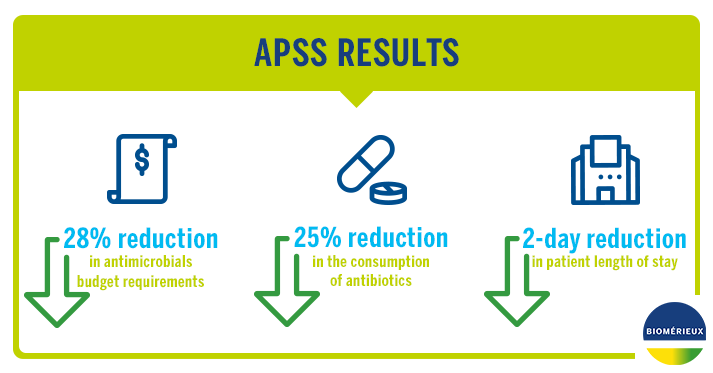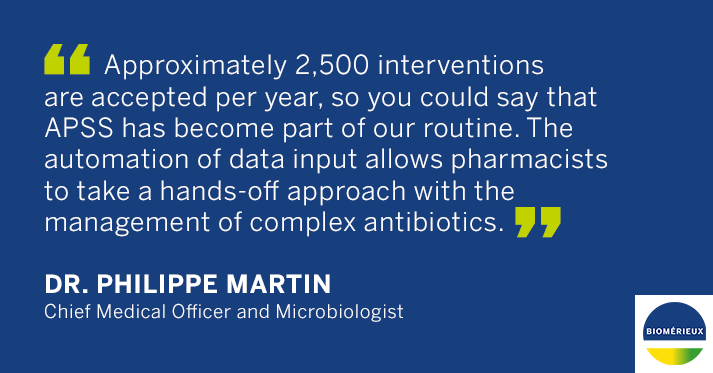
Today, the threat of rising COVID-19 rates in the Fall, combined with weakened immune systems post-isolation, means that hospital clinicians and pharmacists need reliable solutions to track antimicrobials used for infectious diseases and transmissible infection control. No matter the size or location of a hospital and its network of outpatient clinics, software solutions like APSS and ZINC as part of a hospital’s clinician decision support system (CDSS) enable effective management of day-to-day antimicrobial stewardship and infection surveillance.
APSS and ZINC support streamlined collaboration between pharmacists and microbiologists
Since 2010, CIUSSS de l’Estrie – CHUS has used APSS software to support its in-house antimicrobial stewardship and infection surveillance program. Before implementing this software, alongside a team of microbiologists and pharmacists, Dr. Philippe Martin, Chief Medical Officer at CIUSSS de l’Estrie – CHUS, would manually track infection rates and antimicrobial use, ineffective for active case management. APSS software is used full-time by pharmacists with the support of infectious disease specialists who review all problematic cases.
Those who use it daily are six pharmacists specializing in antibiotic stewardship. At the CIUSSS de l’Estrie – CHUS, there are 12 microbiologists, six of whom manage antibiotic stewardship, understand the APSS program and work closely with pharmacists.

Today, Dr. Martin uses APSS daily to provide the correct dose to patients and revise alerts. “For active case management, it’s instrumental. To have a single screen field showing the cultures and what antimicrobials they have received and at what time is key,” says Dr. Martin about his use of APSS as a clinician. “I’m most impressed by how APSS automates without the need for human intervention. It’s our guardian angel by providing all antibiotics that are prescribed and addressing the patients that haven’t been treated with the proper dosage or interactions with their other drugs.”
Meeting the need to reduce hospitalization time, antimicrobial use and cost
In 2018, CIUSSS de l’Estrie – CHUS conducted a study led by Dr. Vincent Nault that analyzed the impact of APSS implementation within the hospital. The results showed how the hospital reduced both the budget spent on antibiotic treatment and length of stay for in-patients through the software.

“There are several patients who benefit from using APSS: those who have not received the right treatment, patients with a bacteria-resistant infection, and there are those who are treated too aggressively for the condition they have,” says Dr. Martin. “APSS touches everything! Urinary tract infections are the most prevalent infection in hospitals. The software is beneficial for flagging the need for interventions with that type of infection and others such as pneumonia, sepsis, and meningitis, to name a few.”
Today, the hospital’s teams accept more than 90% of the recommendations that APSS provides to quickly catch and address problematic cases.

Addressing COVID-19 related infections with the support of APSS
Pharmacists and clinicians like Dr. Martin continued to use APSS throughout the pandemic. “I was able to continue to do antibiotic stewardship while managing the pandemic during the other 16 hours of the day. We did not need to abandon APSS because it’s so well integrated.”
“Antibiotic governance should have been cut off because it does appear to be a less essential activity than managing patient care,” says Dr. Martin about the decision to continue using APSS. “But the fact that we have a beautiful structure with APSS allows us to maintain its use. We were able to do some interventions because, with COVID-19, there were many antibiotics prescribed for infections. Thanks to APSS, we caught a few cases where antibiotics with too broad of a spectrum were used for COVID-19 patients.”
Providing elevated patient care with APSS and ZINC
Regarding how effective APSS is in infection control, Quebec has always had a low rate of MRSA, Vancomycin-resistant Enterococcus, and C. Difficile versus other provinces, says Dr. Martin. “Yes, APSS and our interventions help, but infection prevention programs that also include ZINC—the little brother of APSS—are, when combined, an effective weapon for infections of multidrug-resistant bacteria.” ZINC provides support to clinicians and pharmacists to identify nosocomial infection cases in real-time, limiting pathogen spreading risk among the hospital population. “In the case of hospital-acquired infections that need to be documented, ZINC gives us instant access to the list of patients at risk; another important layer of antimicrobial stewardship and infection surveillance.”

Leave a Reply